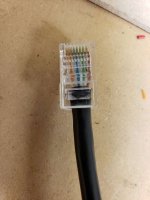Rock86,
Like any control system, there can be a lot to discuss, but to start, check out Platformatics.com. It is one of the lighting controls manufacturers in the PoE lighting space. They have an infographic on their website that might help you understand their system.
Igor, another manufacturer, is the market-share leader with systems all over the US and in 30 countries, globally. They have case studies on their site that show how PoE lighting can be implemented. Their website is igor-tech.com.
As in any PoE system, AC is converted to DC at the network switch. There are no AC drivers PoE fixtures. Instead, the LED arrays inside the fixtures are powered directly by a DC driver (node). In general, each network switchport provides up to 71 watts of power to a node. That node can power up to 4 fixtures, depending on the system and the power requirements of each fixture. Since an LED is a constant-current electronic device, the node is custom-tuned to match the mA draw of the LED array in the fixture(s). Local controls like sensors and wall switches also connect to the nodes and use the network cable for communication to control the system.
For Platformatics, each driver requires a homerun to a network switch. Igor's system allows network-daisy-chained nodes to power multiple fixtures, but there is still a power limit on each homerun.
In both systems, the node's homerun is connected to a network switch, which is connected to a central server. The server is used for system commissioning, monitoring, and occasional maintenance. The system scales like any network; more lights=more nodes=more switches.
For an open office area, multiple nodes would be necessary to power a room's worth of fixtures. HE Williams is a manufacturer that specifically sells PoE-ready lighting. They list nearly 1000 different SKUs, but because all their fixtures are LED, they can convert nearly any fixture they offer to a PoE-ready fixture. To accomplish this, they simply remove the AC driver. HE Williams owns Platformatics, so there's an obvious incentive there to offer PoE fixtures, but they also work with Igor and others. As long as the AC driver can be removed, nearly any LED fixture can be converted to PoE and dozens of manufacturers have done it.
I hope that's a good baseline without being overwhelming, but I can go into more details. Let me know when you'd like more info. As long as it might be beneficial for others here, I'm happy to post about it on this thread.

